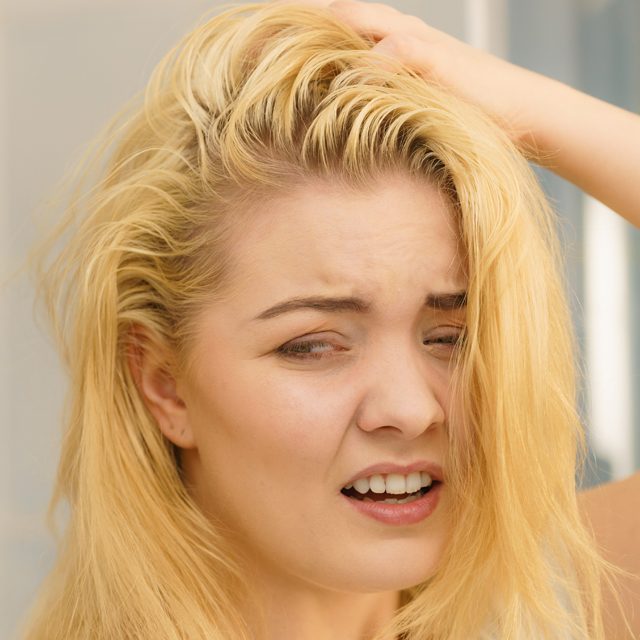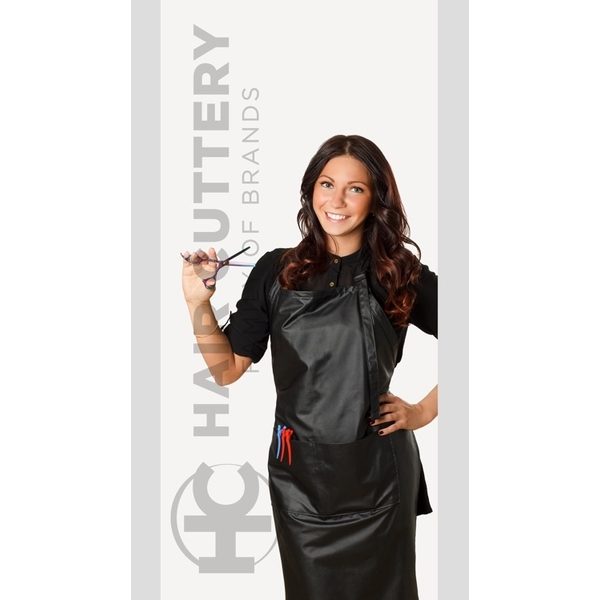WHAT CAUSES OILY HAIR?
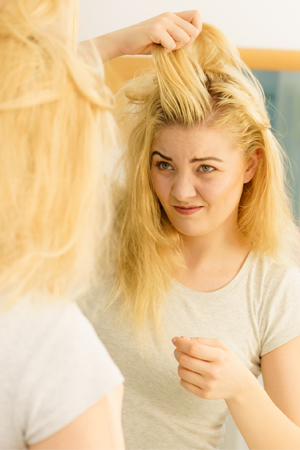
Let’s start with the basics: Your body’s natural oil production glands (called sebaceous glands) have their highest concentration on your face and scalp. While these glands generally work wonders to keep your scalp nice and healthy, when they’re a little out of balance—caused by things like diet, genetics, illness and, yes, seasonal changes—it can result in oily hair.
So what is it about the change of seasons? Fall is a time of transition and wild weather inconsistencies. On Tuesday, you might be strolling around in 75-degree perfection, but on Wednesday you can wake up and it’s suddenly in the 40s. These temperature extremes—and the harsher weather conditions that we know are coming just ‘round the bend as winter approaches—are tough on the tresses. Plus, as we start bundling up in hats and scarves, it can cause the sweat glands on the scalp to work overtime and create even more oily build-up.
Okay, so those are the issues. Fortunately, we have some solutions:

• START WITH NUTRITION
Hippocrates, the ancient Greek founder of western medicine said, Let your food be your medicine. And of course, he had a point. Studies have shown that—what a surprise!—eating greasy junk food really is bad for you… and that includes your hair. Bingeing on fried foods and potato chips can increase oily build-up on your scalp. So a balanced diet is key. Listen to your mother and eat your veggies. They’re filled with vitamins and minerals. And don’t stint on the healthy fats, like nuts, olive oil and fish. Another important factor is to stay hydrated! Drinking plenty of water keeps your scalp moisturized from the inside.
• HAIR-WASHING HABITS
If you have an oily scalp, your natural reaction might be to wash your hair more frequently, which—believe it or not—is one of the biggest mistakes that you can make. In fact, a too-dry scalp will cause those little glands to produce more oil, so you’re just compounding the problem. Instead of washing more, wash smarter. Try washing your hair every two to three days with a great clarifying shampoo, like Paul Mitchell’s Shampoo Three and Matrix Biolage Clean Resetopens a new window.
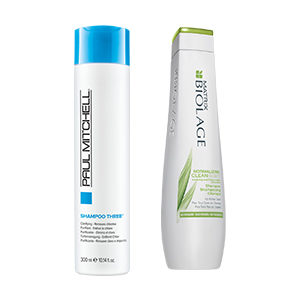
These shampoos are great for deep cleansing and removing oil and styling product build-up. Use lukewarm water and make sure to rinse shampoo out completely.
Yes, you can condition oily hair, but make sure to apply it only to your hair strands and not the scalp. Start at the mid-lengths of your hair and work your way to the ends. One of our faves is Tee Tree Special Conditioner, which doesn’t weigh hair down and contains tea tree oil, which is super-gentle on your locks and helps maintain a healthy scalp.
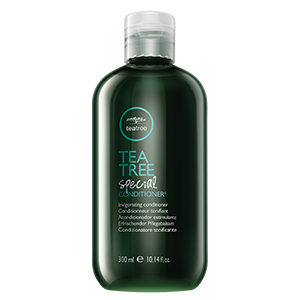
Note: If washing your hair every two or three days doesn’t seem like enough to you, a great quick fix is using a dry shampoo in between washes. We love: Redken’s Dry Shampoo Paste 05 opens a new windowand Ka Pow Dry Shampooopens a new window by Cibu for absorbing excess oils and impurities. (Plus they’re great for travelopens a new window.)
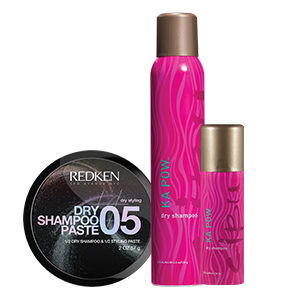
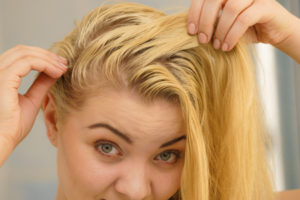
• LOOK, BUT DON’T TOUCH!
Your fingertips contain oils, and touching your hair can transfer those oils exactly where you don’t want them. So try to keep your hands away from your hair. If you’re one of those people who habitually touches your tresses (and there are a lot of us out there!), consider tying back your hair in a ponytail or low, messy bun.
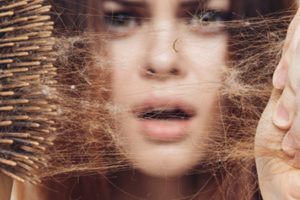
• BRUSH SMARTER
Not brushing your hair keeps oils from being distributed properly, and brushing it too much can agitate your scalp and stimulate oil production. So go ahead and brush your hair, but try to find a balance that works for you.
